We conduct research and work in the NDT sector for the largest companies in our country
Alioth Engineering is a group of qualified engineers with many years of experience in the energy, gas and steel industries. We specialize in diagnostic tests, preparation of surfaces for NDT tests, repair and modernization of energy infrastructure elements, gas pipeline tests and assessment of the technical condition of structures. At Alioth Engineering, we understand the needs and problems of customers, which is why our staff can help in the field of consulting and developing research plans.
.
- Structural condition analysis.
- Reliability assessment (bearing capacity, durability and durability).
- Notch and crack test to assess fatigue life or fracture toughness.
- Determining the size of impacts on structures and their significance.
We often wonder whether a given structure: bridge, tower or hall can still be used, or does not pose a threat to the environment. Assessment of the actual condition of the structure (Assessment of the technical condition structures) is based on an extensive page of the actual condition of the structure. A number of non-destructive and destructive tests, measurements and engineering calculations are used to perform the tests. Thanks to ATCS tests, we can indicate what is happening with the structure, what is the current technical condition, and indicate the further course of work, necessary to protect the condition of the structure.
- Detection of surface discontinuities of the object such as: cracks, distortions, slagging, corrosion and erosive changes.
Examination of hard-to-reach elements with a borescope or videoscope.
Quality control of performed welds.
Visual examinations are the basic research method that allows to detect surface discontinuities of a given object. Cracks, distortions, slagging, corrosion and erosive changes of materials are detected with the naked eye or optical instruments with magnification up to 20 ×. Hard-to-reach surfaces are examined with devices such as boroscopes, fiberoscopes and videoscopes. Visual tests are carried out at various stages of production and operation, during the inspection of machines and devices. An example of the use of visual tests can be quality control of performed welds.
(Ultrasonic)
- Detection of cracks, laps, delamination, welds, porosity and other defects located in the entire volume of the tested element.
- Research based on acoustic phenomena (ensuring appropriate acoustic coupling between the head and the material).
- Intended for testing non-porous materials.
- The tests are performed during acceptance, production, final or periodic inspection during operation.
Ultrasonic testing belongs to the most frequently used group of non-destructive testing in industrial practice. They allow for the detection of cracks, rolling, delamination, welds, porosity and other defects located in the entire volume of the tested element. UT research uses acoustic phenomena. An important issue is to ensure an appropriate acoustic coupling between the head and the material. For this purpose, coupling agents are used. Special heads emit ultrasonic waves that propagate through the object, giving signals that are permeable or reflected from the surface or unevenness. These waves then return to the head and are processed by a computer connected to the flaw detector. Ultrasonic tests can be performed manually, semi-automatically or automatically. This method is used for testing non-porous materials. UT tests are performed during acceptance, production, final or periodic inspection during operation.
- Determining the thickness of a given element at the place of measurement.
- Examination of objects exposed to the occurrence of corrosive processes.
- Measurement of the transit time of the longitudinal ultrasonic wave through the tested object.
- Main application: pipelines.
Ultrasonic thickness measurements use the properties of ultrasonic waves. Based on the measurement of the longitudinal ultrasonic wave transit time through the tested object, it is possible to determine the thickness of a given element at the measurement site. Ultrasonic thickness measurements are particularly important when testing objects exposed to corrosive processes, i.e. wherever wall thickness reduction may have serious consequences for a given structure, e.g. pipelines and tanks.
- Determination of the structure of metals and their alloys.
- Tests carried out directly on the site.
- Determination of changes in materials operating in creep conditions or when determining the correctness of heat treatment performance.
- The method is selected individually depending on the specificity of the tested object.
The purpose of metallographic research is to determine the structure of metals and their alloys. Research can be carried out directly on the site. The analyzed surface is ground and polished in order to obtain the so-called metallographic examination. A special foil is then applied to the prepared area, which allows to make a replica imitating the image of the material structure. These types of tests are often used to determine changes in materials operating under creep conditions or to determine the correctness of heat treatment.
The method is selected individually, depending on the specifics of the tested object. Currently, methods based on the phenomenon of acoustic and ultrasonic emission are used to detect damage, with particular emphasis on surface Lamb waves in thin-walled and plate structures.
- Control of the compliance of the materials used with the design documentation.
Material identification tests are performed in order to control the compliance of the materials used with the design documentation. These tests are carried out by inducing and identifying the radiation characteristic of atoms. The energy analysis of the obtained spectrum allows for qualitative and quantitative characteristics of the materials contained in a given material.
- Hardness measurement is given and analyzed on the basis of ultrasonic wave reflection (UCI method – Ultrasonic Contact Impedance).
- Assessment of the degree of degradation of materials, the correctness of the heat treatment of materials or the quality of the welds.
Hardness measurements are one of the most frequently used methods that allow to assess the mechanical properties of materials. Unlike stationary hardness testers, where hardness is defined on the basis of optical measurement of impressions formed by penetration of an indenter, the UCI (Ultrasonic Contact Impedance) method is used in portable hardness testers. A special probe ended with a diamond indenter, which is equipped with a vibrating rod, is pressed into the tested material. Hardness measurement is given and analyzed on the basis of ultrasonic wave reflection. Performing hardness measurements may be useful to assess the degree of material degradation, the correctness of heat treatment of materials or the quality of the welds.
- The method is based on the phenomenon of capillary hair.
- It enables the detection and location of discontinuities in the tested material (such as: cracks, delamination, rolling, and non-welds).
- The method used during acceptance, production, inspection or maintenance. They are carried out for the entire surface or only locally.
- This method is not used to test porous materials.
Penetration tests allow for the detection of surface defects of materials such as: cracks, delamination, rolling, and welds. This method is based on the capillary phenomenon, i.e. the penetration of the liquid into narrow and hard-to-reach areas and filling them. The penetrants used are designed to penetrate the surface holes. After the appropriate time has elapsed, the excess penetrant is removed from the surface, remaining only in the holes. Thanks to the use of appropriate fluorescent developers and additives, it is possible to detect and locate the current discontinuities. Penetration testing is used during acceptance, production, inspection or maintenance. They are carried out for the entire surface or only locally. This method is not used to test porous materials.
- A method that allows the detection of surface material discontinuities and relatively large subsurface defects located close to the surface.
- The method uses the phenomenon of magnetic field dispersion.
- They can be used at various stages of production and operation, for the entire surface or locally.
- This method is more sensitive than penetrant testing.
- This type of research can be used for ferromagnetic materials.
(Magnetyczna Pamięć Metalu)
- Registration and analysis of the distribution of magnetic scattered fields arising in stress concentration zones.
- Uses natural magnetization.
- Detection of structure defects.
- Stress concentration zones are revealed in real time.
- Detection of defects in welded joints.
(Non-contact Magnetic Diagnostics)
- Assessing the technical condition of an entire section of a pipeline/pipeline without digging it up.
- The fastest known method to diagnose pipelines without draining and taking them out of service for testing.
- Construction of the necessary scaffolding.
- Disassembly / assembly and disposal of insulation in modernized points.
- Delivery, replacement with new ones and maintenance of the replaced elements.
- Post-modernization adjustment of fixings.
- Development of post-project documentation.
One of the areas of the Company’s activity is the production of steel structures, which are made for the needs of its own projects, as well as for customers interested in small steel structures. Thanks to the highly modernized production hall, we are able to create an executive design for you (e.g. sleeve, shaft, load basket), make it and finally install it in a designated place. In addition, the scope of our services includes joining structures using the welding method according to the following methods:
- MIG / MAG welding
- TIG welding
- MMA welding
- Plasma welding
Our system for monitoring critical infrastructure facilities is based on an innovative fiber optic technology and two measurement systems: FBG point sensors (Fiber Bragg Grating), linear Rayleigh sensors, which are characterized by:
- intrinsically safe,
- no need for calibration,
- long life cycle (up to 20 years),
- the possibility of serial connection of individual measurement points on one optical fiber,
- wiring reduction in relation to strain gauges.
Depending on the individual structure of a given object, sensors based on fiber optic technology (FBG and Rayleigh) are mounted directly to selected structural elements and allow measurement of such structural stress parameters as: deformation, stress, displacement and temperature with micrometric accuracy.
In addition, the system can automatically notify the relevant facility services in the event of exceeding the set critical threshold values.
In addition, the Company has a long-life, high-temperature stress and temperature measurement system based on single-mode optical fiber (SM), used in environments up to 1000 ° C. Designed to monitor deformation, stress and temperature from 1 to 1000 points / 1m of fiber in difficult conditions. Designed for power plants, nuclear facilities, oil and gas, aviation, railways, civil and geotechnical engineering, roads and advanced vehicles, gears, marine vessels and racing yachts, wind turbines and structures, pipelines, industrial processes and research laboratories worldwide.
The use of fiber optic sensors for monitoring critical infrastructure facilities: trackways, bridges, viaducts, underground passages, footbridges, handling (e.g. overhead traveling cranes), gas pipelines, pipelines, pressure tanks, rock masses, elements of power boilers operating up to 1000 ° C.
Purpose of the measurements:
- measurement of deformation of an element located on unstable ground,
- acceptance of the structure prior to its admission to operation after completion of construction,
- assessment of the load-bearing capacity of structures already in use and in operation for some time, for which there are doubts related to their technical condition,
- research related to the introduction of new design or technological solutions,
- the need to increase the load capacity of the structure,
- measurement of deformation at extreme temperatures (up to 1000 ° C).
For power plants, nuclear facilities, oil and gas, aviation, railways, civil and geotechnical engineering, roads and advanced vehicles, sports equipment, marine vessels and racing yachts, wind turbines and structures, pipelines, industrial processes and research laboratories worldwide. Designed for applications up to 1000 degrees Celsius. The linearity of temperature and deformation makes the measurement the most precise and repeatable in the world. High temperature protection.
The HT-FOL stress and temperature sensor is coated / protected with heat resistant gold surfaces. It is ideal for optical sensor systems that are required to operate in environments with temperatures up to 1000 ° C, perfectly balancing cost, performance and reliability to create attractive commercial solutions. Available as a line sensor up to 2000m, or a single point sensor or as a multi-point matrix. Well suited to projects that involve the need to monitor high temperature strain and stress at key discrete locations, or to measure temperatures distributed across multiple points. Patent application number: P.435785
Certificates
TUV THÜRINGEN POLSKA – CERTIFICATE OF CONFORMITY OF FACTORY
PRODUCTION CONTROL
EN 1090-1:2009+A1:2021
2827-CPR-PW01-1-1246- 0207.22.00
TUV THÜRINGEN POLSKA – THE CERTIFICATION BODY TUV THÜRINGEN
POLSKA Sp. z o.o
PN-EN ISO 3834-2:2021-09
EN ISO 3834-2:2021
TTP-PW02-1-1246-0233.22.00
Partners
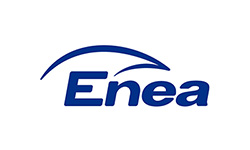
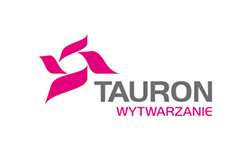
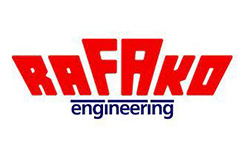
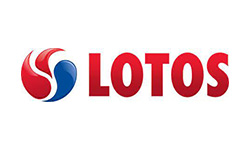

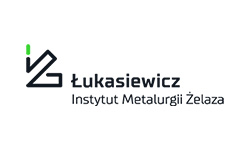
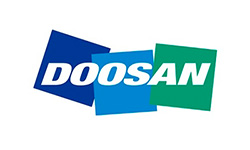

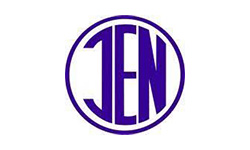
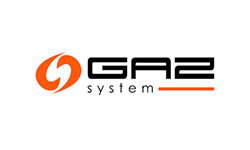
Do you want to start a partnership?
Contact with us
Choose proven solutions
Are you looking for a business partner who will have the knowledge and experience needed to achieve your goals? Our team is ready for action! Thanks to our experience in the industry and the continuous expansion of our competences, we are able to offer solutions that will meet your expectations. Together with us you will achieve success!